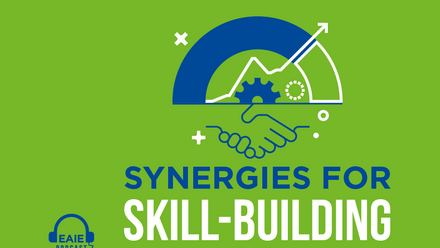International Double Degrees: Are they worth the trouble?

As international mobility has evolved from the pre-Erasmus era right up until present day Erasmus+, different exchange formats have emerged, not only within the European Union, but also with higher education institutions on other continents. One of the most interesting set-ups is where students obtain a common degree provided by several institutions – Joint Masters Degrees (formerly known as Erasmus Mundus Masters), or two degrees given by two institutions – Double Degrees.
These Double Degrees can be (and are) established both at Bachelor’s and Masters level all over the European Union but they are not as encouraged from the policy makers as a Joint Degree. Why is that? Is it because they are not worth the trouble anymore?
Requirements for building an International Double Degree
Firstly, let’s see what we need in order to develop a successful Double Degree. But here comes the first issue: what do we mean by ‘successful’? I have been working for many years in the development of Double Degrees in engineering fields, where the most important element of a successful degree is for it to be attractive to both students and employers alike. This definition is extendable to other branches of knowledge, so we can generalise this first and broad definition of ‘success’. Let’s now come back to finding the pieces that we need to complete the jigsaw puzzle. To create a Double Degree, you need:
- Two higher education institutions with already established degrees, well reputed at least in their local sphere of influence.
- It is highly desirable that both institutions are already reliable partners concerning international exchanges.
- The syllabus and the strengths of both degrees must not be equal but complementary (specialisations, internship programmes, labs, whatever) so that there is an added value of student training.
- The legal structure of the countries and institutions must allow the establishment of a Double Degree.
It is hard to find and fit these four pieces and at least one person in each institution must be committed to developing a new project with these characteristics. And now the real work starts. The syllabus must be studied in detail to see the particulars of each study plan and to build an academic path between both degrees so that students spend a certain number of semesters at each of them, without adding more than one year for the completion of the independent degrees (remember, it must be attractive for students). Both institutions must also be satisfied that the training complies with the particular requirements and that the competencies have been established in order to award such a degree.
Further considerations
Some other ‘minor’ matters must be taken into account in the planning and formatting. Student selection, tuition fees, language knowledge (in many cases the teaching languages are different), insurances, grants, accommodation, orientation, what happens if the student fails at the partner institution, rights and obligations of the students… And, once a memorandum of understanding is agreed, it must be approved by the legal bodies of both institutions.
Usually, even if former agreements are used as a basis, it takes between 6 and 18 months, on average, to have a new Double Degree ready to be launched. Many difficulties arise along the way and it is not usually a smooth process. So, why bother?
Benefits for students
Since the students in these programmes usually spend between two and four semesters at the other institution, they will have the general advantages of any long international exchange. These advantages include: cultural enrichment, a second, well mastered language, an opportunity to mature, experiencing another method of learning their branch of knowledge, the ability to work in international environments, plus the added value of obtaining two degrees which inevitably increases their employability.
Employers highly value Double Degrees as the effort to have obtained those two degrees (both because of the extension of the studies and of the contents of the carefully designed programmes) is greater than for a regular degree. As I wrote above, in the case of regulated professions, these programmes must be carefully designed. And this is one of the main attractions for employers, that the students have complied with the required training in the two countries, it is a proof of the seriousness of the programme and of its contents.
My experience is that engineering students who have taken part in double degree programmes have a very good opportunity to be employed in internationalised companies at home or at companies in the other country in which they have studied; and they can easily develop an international career in a third country. The quality of their jobs is also higher than those of their fellows who have not taken part in these programmes.
Benefits for higher education institutions
As the institutions are offering high quality training which increases employability, the satisfaction of the students also increases. As there are more and more alumni working in different companies all over the world, the number of links developed with those companies greatly increases. And all this has a positive repercussion on the reputation of the institutions, which helps them attract interesting students and keep the ball rolling, thus standing out from other institutions which do not offer such programmes. Finally, the links between both institutions are reinforced and generally this leads to other degrees of collaboration.
So are International Double Degrees worth the trouble? The answer is a definite yes but, indeed, they do involve a lot of work and commitment, and this is not something that can be undertaken lightly. A strong commitment is necessary on both sides, but is this not what we try to teach our students? Commitment leads to success.
By Alberto Oleaga, Erasmus Mundus local coordinator for engineering programmes, Faculty of Engineering Bilbao, Universidad del Pais Vasco UPV/EHU, Spain.






